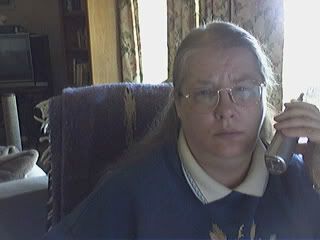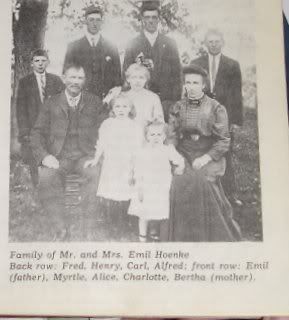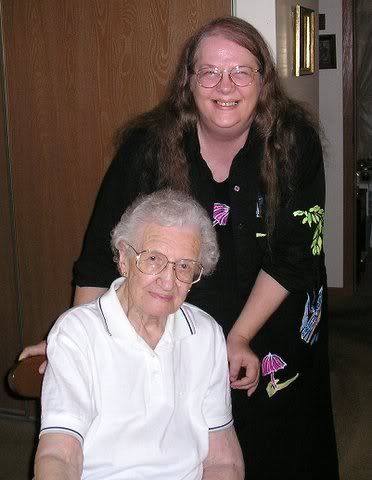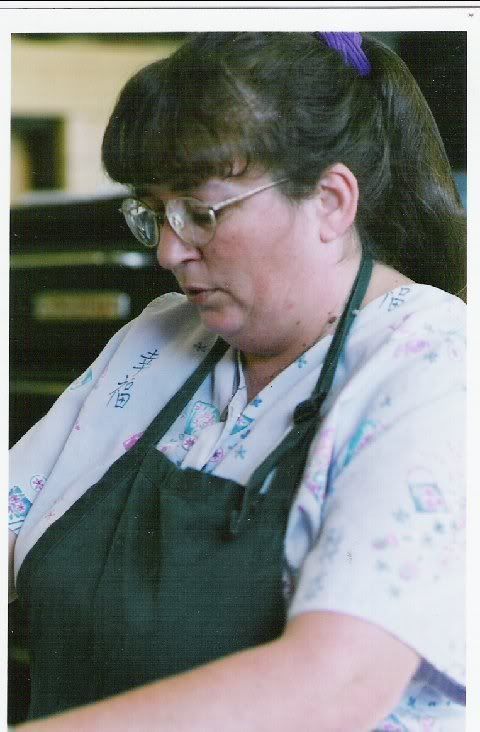Working on Project Manager...
Table of ContentsInitial Considerations –
Chart 1 3
Position Chart 4
Type chapter title (level 3) 5
Organizing Goals 6
Past Goals 6
Present Goals 6
Future Goals 6
Ideal Goals 6
Plan the program by keeping in perspective the Mission statement 7
Comprehensive program to 7
Value and support 10
Challenge to responsibility by ..
Increase individual competency in ..
FIRST CONSIDERATIONS
CHART 1
Organize
Past Goals
Present Goals
Future Goals
Ideal Goals
Plan the program by keeping in perspective the Mission statement
Comprehensive program to assist in securing independence within the community; Strive for highest potential
Value and support individual self-sufficiency and control by enlisting acts of choice-, decision-making and self-regulation
Challenge to responsibility by utilizing forethought, performance, and evaluation of personal and community goals
Increase individual competency in achievement, social, personal, community, and living domains
Technical Aspects
Utilize the new Office 2007 – change all computers in the system to match
Maintain usage of extra programs such as Paper Tiger, Print Shop, and Personal Brain
Check on-line for assistive programs such as encyclopedia, dictionary, blogs, and groups
Train and excite staff on usage of programs and educational CDs and DVDs
Learning
Self – Work toward being back in school by July working at Educational Psychology Degree
Others - Focus attention on willingness and appreciate of open minds and curiosity
Keep cost perspective of tools available and tools necessary
Train self to parallel what we are learning toward individual’s learning
Responsibilities
Maintain open communication w/Sister w/o overwhelming her, the staff, and us
Incorporate CARF and other business practices into the program Document/format everything placing the program elements in perspective
Divide components between functional and project tasks
Chart the initial considerations associated with the development of the program and position of Program Director
This list does not have to be conclusive, but more as a means to a starting place.
Organizing Past Goals
The past program goals of the center have been charted primarily through the State regulations and the specified set of CARF folders. While this has seemed orderly in the past it has been unruly to change or alter. Each year CARF puts out a new standards manual, which usually disorientates the standards.
Organizing Present Goals
Are such that the State regulation book has been updated by Sr. and the CARF folders have had new information added, but remain mostly unchanged. It would seem to change over the books to a new numbering system; we would lose the old references, especially critical for the use of the Paper Tiger Program.
The solution would be to assure that all the older standards listed in the Tiger have been given a 2003 reference number according to their location (i.e. 1.2.27). Then we will need to go through each request from the new CARF book and locate its past usage, and then add the new reference number to the old listing (i.e. 1.A.1.a.2) under the Tiger’s “Item name.” In this manner using the search feature, we can pull up and sort according to which reference number was used because the reference will come up whether we use the old reference number or a new. This will also be a good time to purge the old records.
We should make note to continue adding the date to all documents entered in the paper tiger, so we can pull together lists of the most current or recent priority. Also, we cannot change the location tab name, so when we are adding new material for similar input, accessibility, information or other, we should add the year in the newer location title. We shouldn’t duplicate previous records entered.
Organizing Future Goals
In the future, we will need to go back to the original plan where if any document is added to a CARF folder or a location is changed then we will need to change first the notations in the Tiger. We might also want to consider documenting in the Tiger Sister’s responses to the survey by noting a reference of its location in the survey book. This way when we ask the tiger for a certain reference number, Sister’s response will become available in context with other information. This establishes the most relevant chain of responses to the actual question.
Organizing Ideal Goals
An ideal goal for the program would be that the CARF system and all other aspects of the position of Program Director would be documented so that the Administrator or staff could have easy access to the information and that similar efforts of working through CARF and Program direction could be duplicated. It is under this assumption that anything pertaining to the role of my being a Program Director will be documented.
Plan the program by keeping in perspective the Mission statement
The center offers a comprehensive program to assist individuals in securing independence within the community; Strive for highest potential”
“What is the comprehensive program? How can we best assist the individuals?”
In answering these questions and introducing the business practice of CARF “Criterion A,” we can explain the first priority of a comprehensive program is to receive input from the stakeholders. The stakeholders include the individuals served, personnel, families, government (a funding and advocate resource) and others.
Documents found in our CARF “Input” folder such as rosters, policies and procedures, state regulations, etc. verify that there are systems in place so that we can carefully conscientiously serve individuals. We listen as a matter of compliancy to mandated rules and regulations and in serving best practice.
We benefit individuals and the community directly when we listen to them and accept their established values and those given to us by the Order of Daughter’s of St. Mary’s of Providence. We gain insight toward value in the sight of God.
To achieve this lofty ambition, St. Rose Center surveys the individuals, parents, personnel, volunteers, and is surveyed by the State of Illinois and CARF as well as other safety systems. Information gathered, is analyzed and presented back to the stakeholders in various forms. Through the verbal and non-verbal responses we receive, we can answer the question, “How are we doing?” We look for responses that relay individual and group trends and we try to deduce how our affect can be better trained to improve the service.
We have learned to sort out the information given to us by paying attention to a system of self-established domains. The domains are our given focus on living, community, social, personal, and achievement. In framing interests by domains we learn to better understand general priorities and principles without being overwhelmed by the sheer numbers of responses from formal and informal surveys.
Individuals have different ways of saying for example that they have desires to be out in the excitement and variety of the community, or they want to help their Mom pay for a “better life” (back yard swimming pool), or they have psychologically tuned in to an interest in the investigation of science.
The center tracks individual goal progress, but in addition, we test or balance our program affect and cost by tracking positive and negative increments added to or subtracted from the domains from the base of individualized annually-derived standard rates. This will be explained more fully later.
For now, it is important to know that domains assist us as stakeholders and the individuals in tying together various competing goals into a recognized direction like connecting many charms onto one charm bracelet.
Respectively, being in the community and working to help Mom pay costs are in the domain of community. Having a better life is tied to the living domain and having an interest in science is tied to the achievement domain. There is no personal priority expressed that is more correct than another, and there is no conflict of interest in choosing one domain over the other – it is a matter of personal preference riding on certain tides of change.
For example, after two or three months of questionable progress on one goal, an individual may ask or be given a suggestion to discontinue one goal such as functional reading. Reading falls into the personal domain. The team realizing that the individual was overwhelmed or discouraged with the weightier task of reading may offer instead a goal to increase the individual’s effort and endurance levels and this might be done by challenging him to timed puzzles.
The individual still progresses forward along the same vein, but is given more options to be successful. Persevering at self-improvement allows for higher self-esteem and hopefully will power to increase momentum in general. The secondary goal might then support later going back to the original goal after optimism is restored. The two goals are aligned in that they are each recognized as part of the personal domain. The priority is self-growth.
In truth, most of us work toward our goals in a manner that adapts to change no matter how serious we are in keeping one set of resolutions. The domain system works as safety net. It recognizes there are many alternatives to living life to the fullest and these alternatives arrange themselves within our day-to-day and moment-by-moment choices, decisions and ability to self-regulate.
Because the center is tuned into the priority of gaining input from the individual served and his supporters the individual does not become locked into fixed or stagnant strategies. He learns to enjoy the practice of goal-making as a process because it adapts to him in the present. He does not have to fret over a long-awaited end result, which is the kind of goal reward that becomes so allusive to most of us. Domains make for a general sense of healthy perspective because they live and breathe with the individual.
The domain method is more akin to standing at the top of a mountain and choosing which course to take while understanding the many slopes lead to the bottom of the mountain with its cup of hot chocolate, sweet marshmallows, and roaring fire. The skier is challenged immediately by a variance of obstacles and rewards set to his present ambition. Because choice is exactly in the present it is most real and likely to help the individual self-actuate.
We recognize that to accomplish an improvement in a domain - such as community - many aspects need to be come together that may not be written-up as a formal goal, such as opportunities to be “out there,” or a developmental interest with money, or an ability to work hard while skill training, or perhaps in better understanding peer competition.
In the case of domain programming (without losing the sense of self-determination of having goal structures) intuition wins against a more formally-coded or restrictive sense of maps, schedules, and clocks. Paradoxically, because of the staff’s discipline of recording, space and time are not lost.
Each element toward domain increase develops confidence toward the whole. Whether or not we correctly label or pin down the “perfect” goal the first time, we maintain an on-going look-out for that which supports personal direction in real-time.
We keep in perspective that often the individuals served will ask for more of what they automatically get “handed down” and will also often ignore responding in the negative even though their experience may not be positive.
It is up to the staff to assist the individuals in further developing interests that are real to them without overshadowing the individuals’ sense of originality or discrimination. Life is balanced naturally between all shades of good and bad, green and red. Usually when one door closes another will open and it is the staff’s calling to encourage that another door be tried.
In general, most people seek and are motivated by that which is inviting. This seems to work in our favor. For example, most individuals served at the center “love” food preparation and dancing; their tummies feel good, their bodies are stretched. The domains covered are living and achievement.
We offer these interests as part of “the program package.” We find the individuals in these activities are self-directed and emotionally self-sustained. Anticipation beats out boredom, and as an aside these things that are found to be enjoyable are healthy for us. If we are premeditated to think learning to dance is an achievement, then we are more apt to look for milestones.
Another example would be to recognize our own flourishing feelings as we plan an upcoming vacation or holiday. Planning is a community (Community plus) domain and is a healthier and more inviting option than rehashing a spat we had had earlier with a co-worker (Social minus). I would certainly hope in the case of calling my mother on the phone that night I recall to her between the two only the plans. As a supporter, I can then add my encouragement especially if I was focused on your gaining relaxation (personal plus). When we are at the end of our day, chances are we will feel more secure having thought about our adventure and self-care.
The pleasant feelings place us in “our comfort zone.” Perhaps given a choice next time we will feel challenged to rent a video on fly-fishing and clean out our tackle box rather than crawling back to bed to take that premature Saturday afternoon nap, which might suggest a depressed affect of “giving up on the day,” or “being tired of it.”
We recognize human achievement hardly ever surpasses expectation, so by obvious need; staff challenges individuals to work from a field of optimism and belief in their future and potential for growth.
The comprehensive plan includes all of the things the individuals and other stakeholders remember as good and ought continue in their goal-planning, but as well it includes the things that make each of us stretch a little bit further toward being the people we want to be; our ideal selves.
Sometimes it seems we need help drawing ourselves out of passivity toward activity. We invite the individuals to shed thoughts, ideas, and behaviors that constrain their freedom, such as letting go of jealous anger from which direction they might recover spontaneous joy in other-directed relationships.
By maintaining conscious awareness of the five domains, we keep in mind our most lofty-ambitioned ideals. I set about a direction.
If I keep in mind that my goal is to increase the domain of social, I might start and/or be given opportunities to grow in that direction. I might make changes more conscientiously and plan to spend extra time trying to get to know someone, or I might be more optimistic when the group talks about party games, or I might choose more freely to participate in a role-play about peer pressure.
All of these things are possible because I am “looking” for these kinds of good possibilities. If I shy away, then that is the next thing I need to address. I have to ask, “Why? What happened?” The likelihood of safely inspired brainstorming is a normal duty for the center’s staff. The center is like a well fertilized pasture. We recognize and encourage growth – plant the seed. When things are left more to chance one never steps past his habits, and eventually becomes disengaged and discouraged; couch potatoes.
Staff is trained to focus-in, note methodically, and encourage new behaviors such as dancing during the lunch break (achievement plus), dancing with a partner (social plus) would be a credit toward that direction. The positive notation is an increment added to the program affect of the training program. Some events or activities are going to be missed, but if consistent change is happening in either direction (positive or negative), it would be difficult to ignore.
In practice the domains funnel into thirteen program areas and these areas spread out in about 50 varied interests. Individual goals are furtherance of objectives within the domains, but also as specific objectives defined by the individuals, personnel, family, and state representatives who meet annually as a team to establish an Individual Program Plan (IPP).
The goal-making process represents the practice of establishing a focus on the individual. It is hoped that time spent showing and teaching people that they and their opinions and decisions count will prompt them to be more unique and independent in their choice-making and those choices will take on more meaning and purpose for them.
The individual reaches his or her highest potential as they work through and achieve responsibility for their goals. Less formal goals are watched for and recorded as are the formal goals. This might be like when one learns positive behaviors to gain peer attention (social plus), completes a task faster than a boss recommended (community plus), or gets through the day without road bumps so as to speedily reach Mom’s delicious home-made lunch (living plus).
When the individual can do something they mean to do rather than things just happening reactively, he or she has learned about being independent. It’s this ownership over one’s life direction that allows us to feel well about ourselves and we soon take on self-encouragement and become braver people; we take more risks and become more attuned to our environments or communities.
Each day invites new opportunity to break through an inner wall of self-constraint. The individuals learn to ask, “How can I be my best me?” And, “Can I have more?” It is the feat of learning, “I can” rather than, “I can’t,” or, “I won’t.” It is learning to not only ask, but to answer, “What is it that I really want? Is this goal short or long-term? Is this particular choice a “big” deal to me or a “little” deal?
The comprehensiveness of the program encourages these questions while maintaining the focus on the individual’s inner domains of achievement, social, personal, community, and living. We help the individuals by assisting them to follow through on their priorities; we listen to the input they and their supports give us, and then we give it back by framing in perimeters that act as soft structures.
Value and support individual self-sufficiency and control by enlisting acts of choice-, decision-making, and self-regulation
















